Network Rail has announced a £35 million pound investment for Clapham Junction station aiming to improve passenger experience and reduce congestion. The improvement project has actually already started and should continue over the next 12 months.
Work to be phased over 3 overlapping periods
The first phase should be the most visible with a full cleaning and repainting of Grant Road entrance and of the overbridge. Although it will not be a full reconstruction of the structure spreading over the tracks (the over-bridge is not listed but the whole station is in the Conservation area, which makes it more difficult to get the necessary authorisation for work), it should welcome several new retail units.
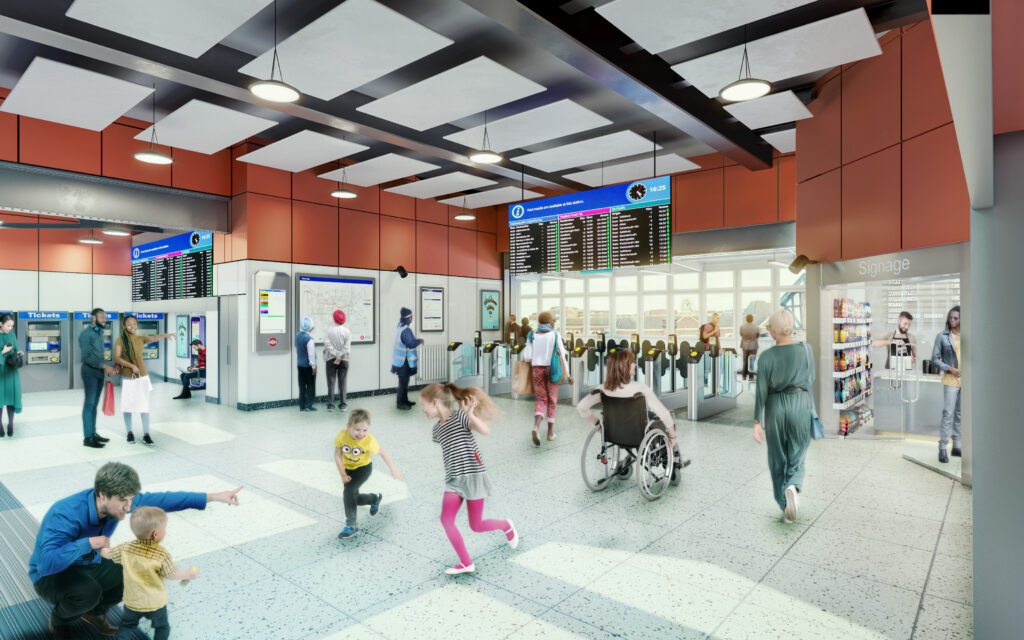
The second phase is focusing more on improvements for the Brighton Yard entrance. This will cause the most disruption as they will close the ticket office for this entrance in order to facilitate the work. There will also be a temporary reduction in bike rack spaces.
Starting in a few weeks, work should be carried out to replace and enlarge the staircase for platform 13/14 (from the overbridge), which is the platform used for Gatwick Airport and Brighton. Unfortunately the lifts will be also closed for about 2 weeks and passengers requiring step free access to Victoria, Battersea Park and along the Brighton mainline will need to take alternative routes.
As each phase is targeting different elements of the station, some will happen concomitantly.
A detail of the 3 phases displayed by network rail shows:
1 – Ongoing: Refurbishing Grant Road and the over-bridge
Phase 1 has already started earlier this year and should conclude in Spring 2023.
Network Rail senior sponsor Adrian Gogay said:
“So far, our teams have completed a series of improvements, including installing and rolling out free passenger WiFi, refurbishing the lifts to improve accessibility, and repainting the overbridge from platform one to six.”
It should cost about £15.5m and includes:
- Refurbishment of all 10 lifts (already done)
- A roll out of passenger free Wi-Fi (already done)
- Painting of the overbridge, platforms 1 to 6 (already done)
- Painting the waiting rooms on platforms 9/10 and 13/14
- Deep cleaning and painting of the Grant Road entrance, with additional lighting installed
- Construction of new retail units on the overbridge and in front of the station’s Brighton Yard entrance
- Installation of new digital advertising screens
2 – Just started: Brighton Yard entrance improvement
Phase 2 is starting now, this Autumn 2022, and is meant to last for most of 2023. It includes:
- Changes inside Brighton Yard entrance to reduce congestion, increasing ticket barriers from the current five to eight.
- Increase in the number of toilets (including one for disabled access) and baby changing rooms
- New, larger, retail unit
3 – December 2022: Platform 13/14 staircase and information system
Phase 3 should start next month, December 2022, ahead of initial schedule. It involves:
- Replacing the staircase to platforms 13/14 with a wider and safer staircase, creating more space and making them safer to use.
- Replacing most of the station’s passenger information systems including new information screens, CCTV and announcement system.
The ground floor of Brighton Yard building could become a bar
A planning application (p.a. 2022/1904) has been submitted (and already approved by an officer in September 2022) to redevelop the ground floor of the Brighton Yard building, facing onto St Johns Hill.
The building was originally a booking hall built around 1910 as part of the extension to Clapham Junction Station and is a locally listed Edwardian baroque building. The place was used as a parcel office/station ancillary but has been closed for decades to become a storage facility.
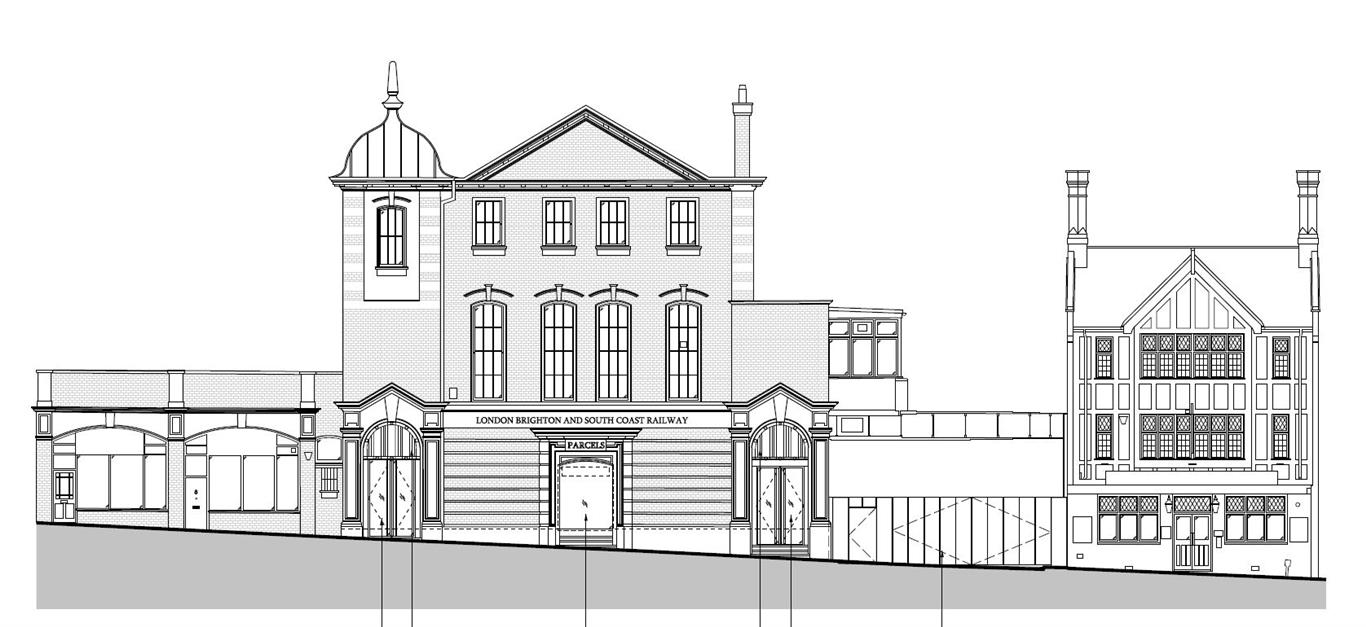
The proposal is to transform the facility into a pub, wine bar or similar drinking establishment with expanded food provision with internal and external alterations. The external alterations consist of removing the Bostwick gates and timber doors from the three main entrances to the proposal. It will leave the decorative ironwork located above within the arch section of the two side entrances (there is also a proposal to keep the original doors as wall panels). The main purpose is to fit new glass doors for the premises.
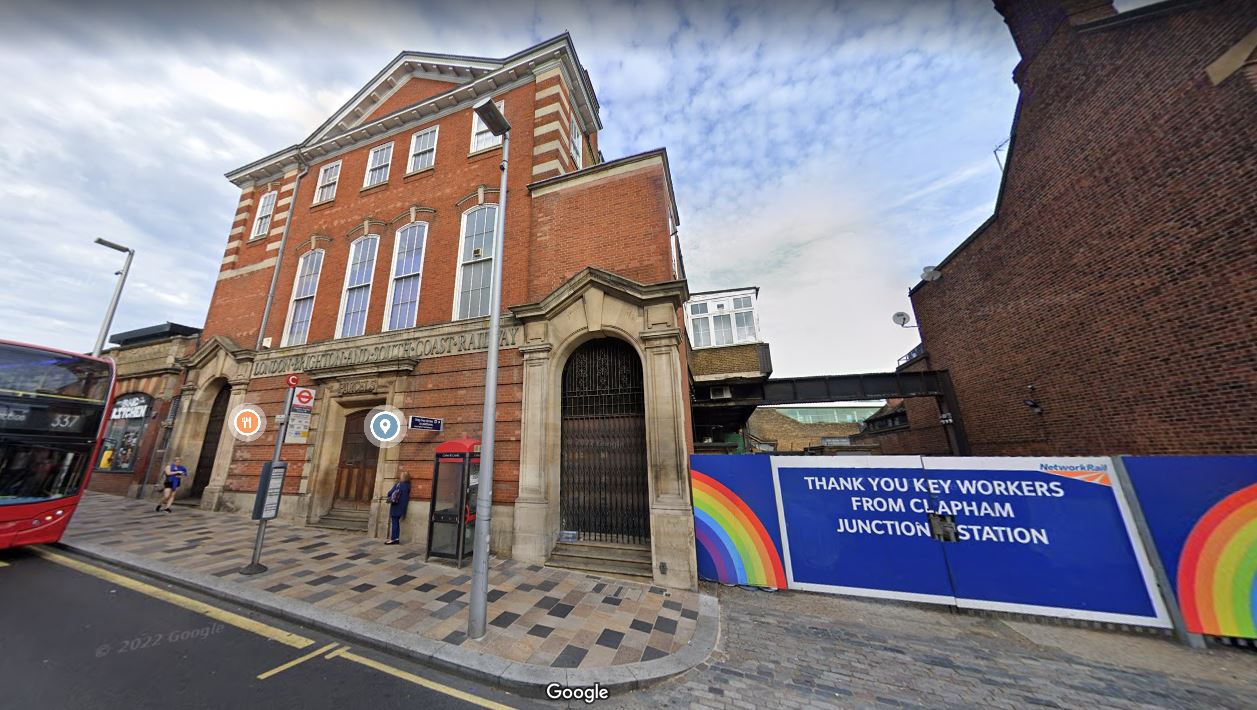
A new pub will make direct competition to The Junction on its right, but might also welcome passengers from the station and attract new customers, especially following the redevelopment of Peabody estate on the other side of the road.
A history of improvements over the last 12 years
In 2008, private developers presented a project of two 42-storey skyscrapers at Clapham Junction station, involving destroying most of the current station and investing £42m into rebuilding a new structure (and actually even less as the rail improvement package was £39.5 million, which included some necessary land acquisition).
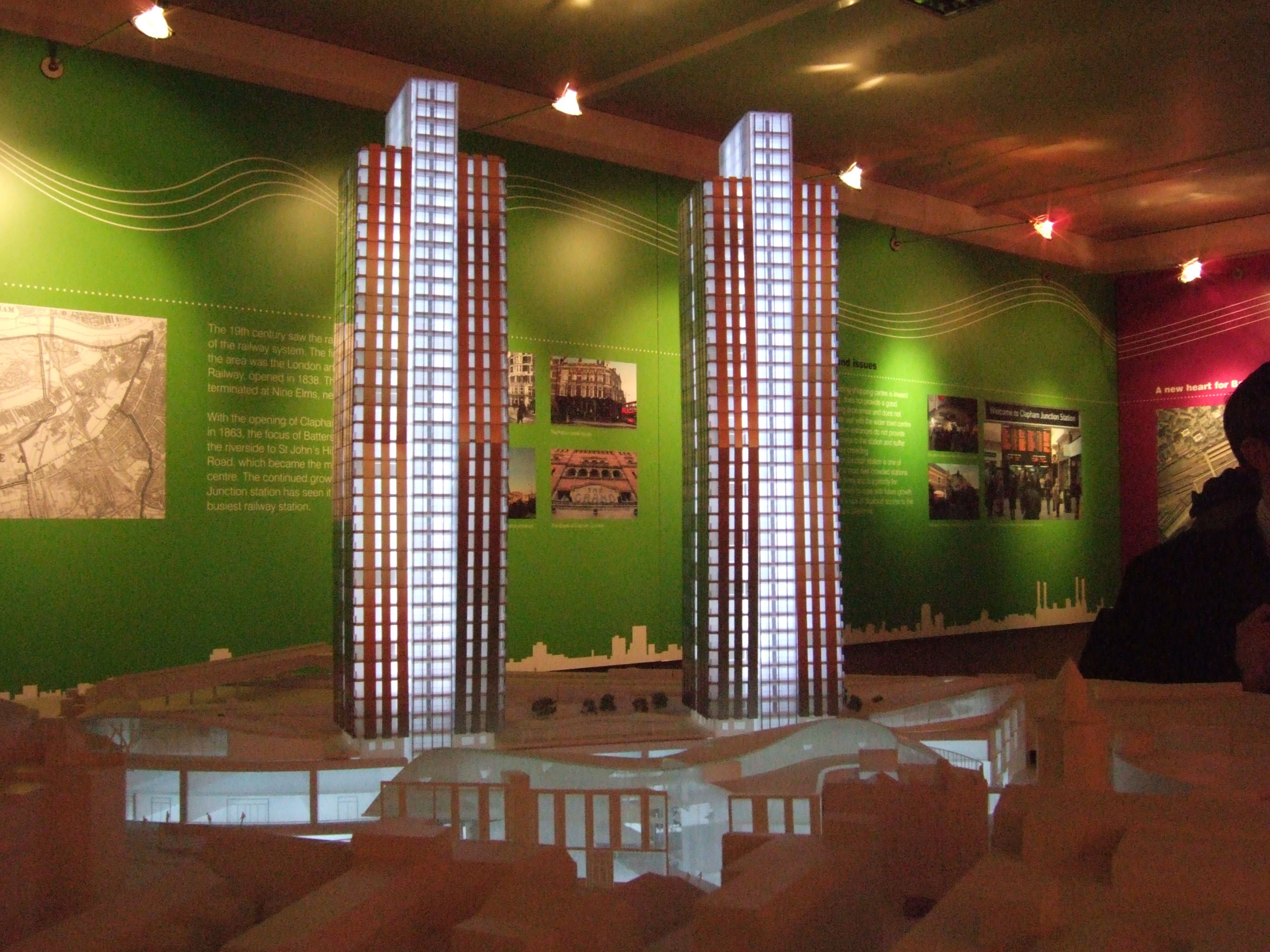
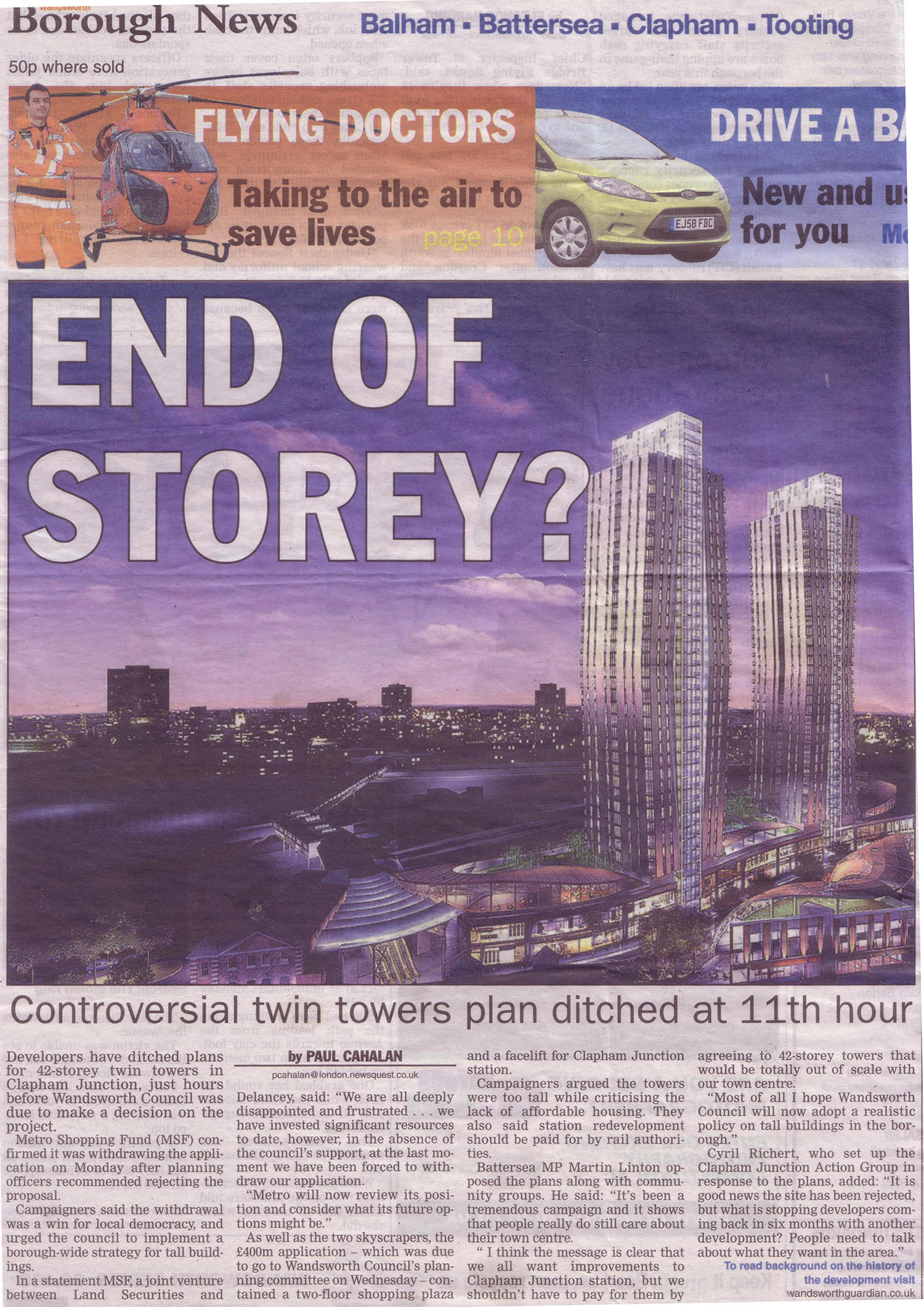
This project was abandoned following a massive local campaign lead by the Clapham Junction Action Group.
Their main argument at the time was that their £250m project was necessary to pay for their £40m improvement of the station.
However, following the collapse of the twin towers’ scheme, a series of investments funded by public bodies took place:
Canopy extension, staff, stairs, repairs in the subway (2009-13): Lord Adonis, then
Labour Transport Secretary, allocated £10m as part of a global funding provided to the most deprived stations.
Step free Access (2008-10): Lifts have been installed on all platforms (part of the “Access for All” government policy). Original funding from the government was £8.5m.
New entrance at Brighton Yard (2010-11): the total cost for the entrance was originally estimated to be £1.5m and then reviewed to £1.9m.
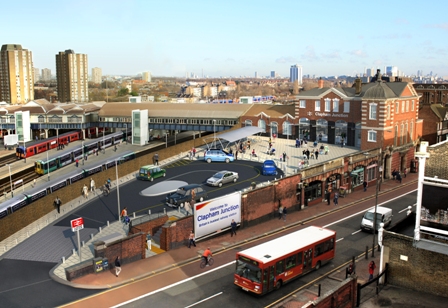
Eventually the step-free access scheme and Brighton Yard redevelopment became part of the same project and the government (Department for Transport) decided to step up its funding, providing £13.2m (through Access for All and National Stations Improvement Programme). The remaining came from South West Trains (£600k), Wandsworth Council (£300k), Transport for London (£300k), Network Rail (£200k), Railway Heritage Trust (£75k). The total was equal to £14.675m.
A completely new refurbished entrance in Grant Road (2012) with lift, ticket machines and new access to the overground on platform 2.
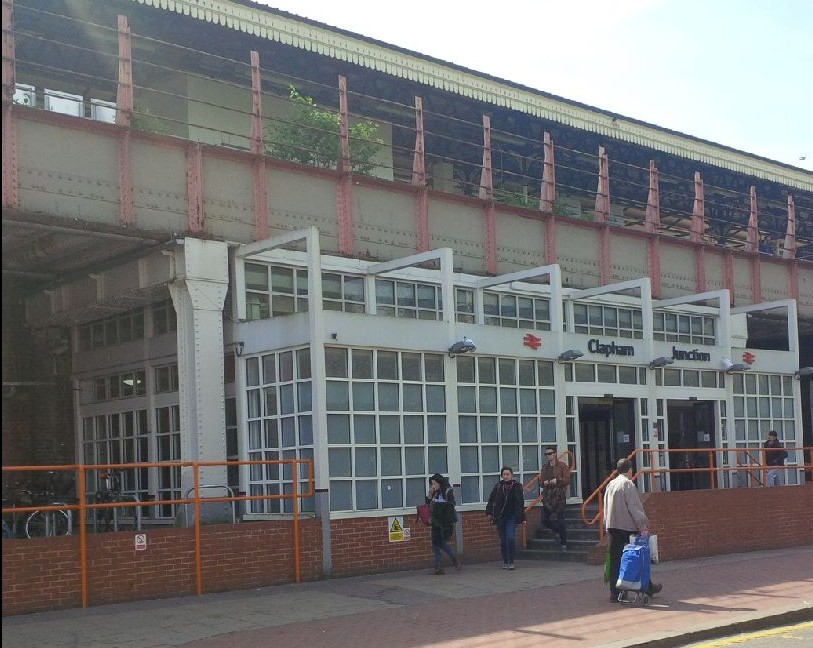
Straightening and lengthening of platform 17 (2014): Platform 17 was straighten and extended to accommodate longer trains. Network Rail re-aligned the platform by building a “balcony-type” platform over the pavement on the station approach, with an emergency staircase at the end.
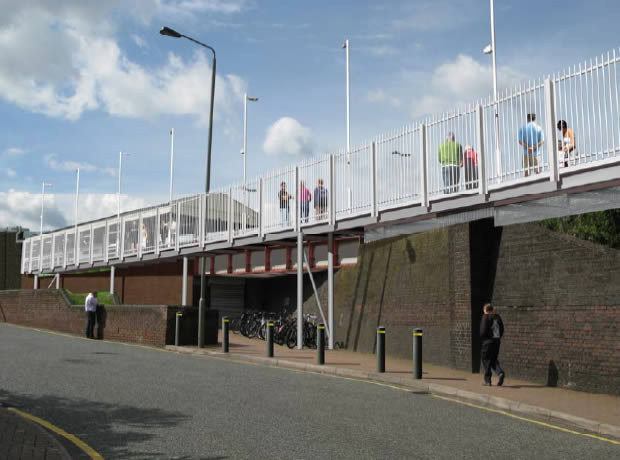
Enlarging ticket barriers and access on St John’s Hill side (2014): Network Rail used the opportunity to move the Platform 17 staircase to free space in the under-path and enlarge the ticket barriers. Instead of the previous 7 ticket barriers, they now accommodate 11. With more than 50% increase it makes a big difference, especially at rush hours.
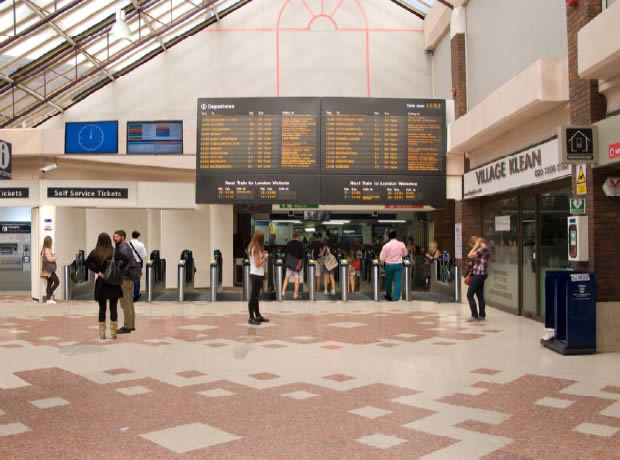
In total, by 2015, the many refurbishments and improvements made to the station amounted to more than £40m, which was the amount the private developers were willing to give in compensation of their two 42-storey skyscrapers.
And every passenger using the station currently and a decade ago must acknowledge that all those works have improved the station. Of course, it’s still not ideal and we are far away from the brand new Elisabeth line’s stations. But Ellie Muir from Times Out should come and visit instead of reusing old clichés from the past, as she wrote last week:
“Commuters who use it are familiar with being trapped like sardines at ticket barriers, sweating up stairs and slopes, and cramming on to platforms. It’s dissed for being dirty, overcrowded and lacking proper facilities, so a bit of a glow-up is way overdue.”
The £35 million announced is a substantial amount that could stretched for more improvements not only for both entrances in Brighton Yard and Grant Road but potentially also in the subway. At a later stage, they might also consider a redevelopment of the St Johns Hill concourse to match the two other entrances once refurbished.
Some controversy about the makeover
According to MyLondon, “locals say it’s not good enough” and “a revamp of one of London’s busiest train stations is facing criticism for making small improvements despite calls for a complete makeover. ”
As it happens, we haven’t found anyone saying that they would like to get a full redevelopment of the station, including several 25 to 50 storey-towers, similar to the concept proposal unveiled by architectural practice Hawkins/Brown in 2019.
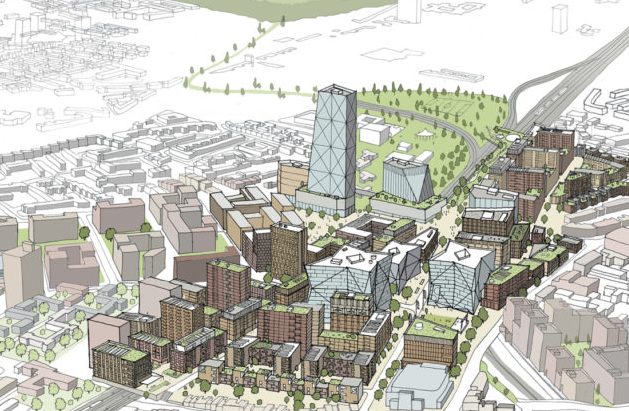
When they put forward their vision, architects Hawkins Brown, consultants Mott MacDonald and engineers Laing O’Rourke said the station presented a “once in a lifetime opportunity“. For many it resonates in a very unpleasant way as those are the exact 5 words that supporters of the previous 42-storey twin towers scheme used.
However, when considering that Clapham Junction is the UK busiest train station, with 8.5 million passengers a year and twice as many interchange as in London bridge, it is also understandable that a bigger commitment could be expected for the site.
The Battersea Society, which described the 2019 concept proposal as “ambitious plans” (sic!), is showing their disappointment with the series of projects, ending their article with a pessimistic conclusion:
“And the prospects for the much-needed complete redevelopment seem further away than ever. Small improvements is all we can hope for in the near future”.
In January 2019, CJAG met with Jill Stone, Network Rail development manager (Wessex area & early projects) to talk about the current consideration for Clapham Junction station.
She explained that her team was exploring two broad options: A scheme aiming to release the current congestion in the station, and a more comprehensive redevelopment of the station, which could include building a new deck over some of the tracks and accommodate further development.
Obviously, the current plan fits into the first option. The deferral (to a future that could be very far away) of any progress on CrossRail 2 could prevent for a very long time any major redevelopment of Clapham Junction station.


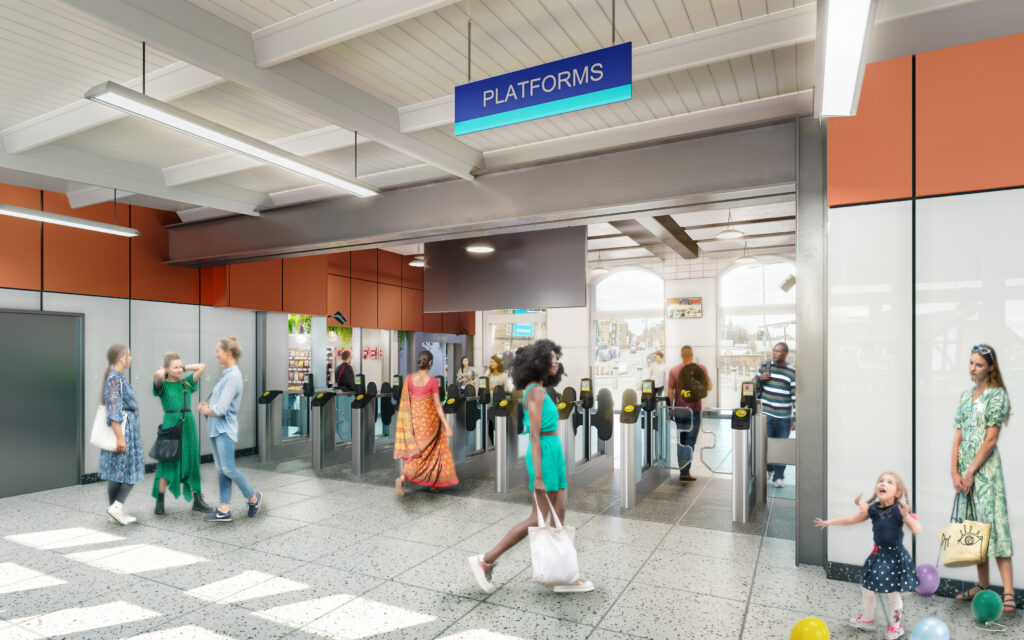
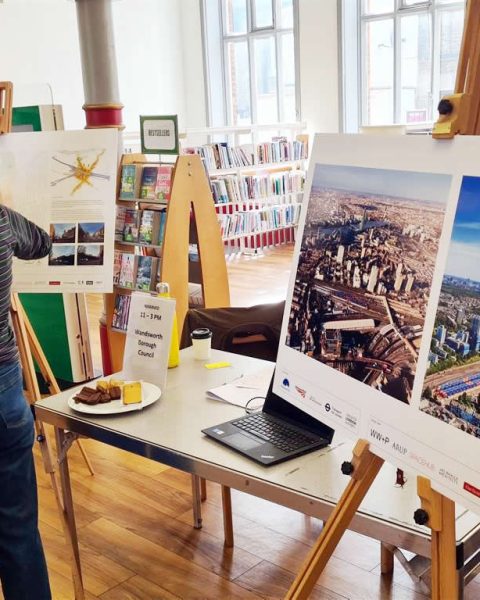
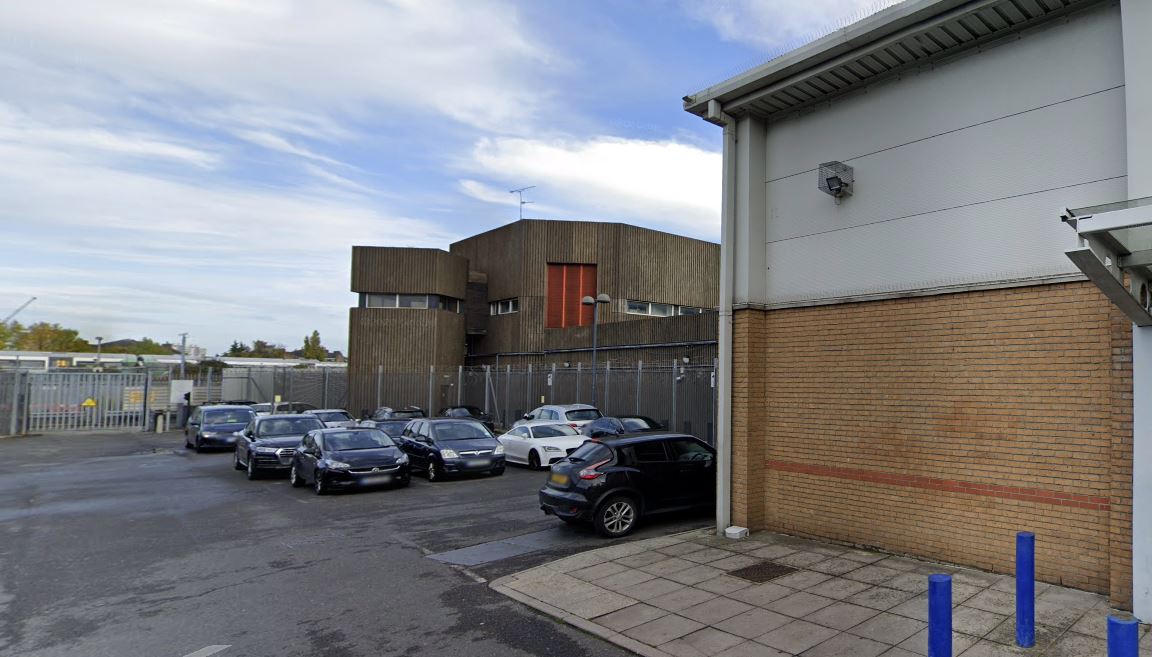
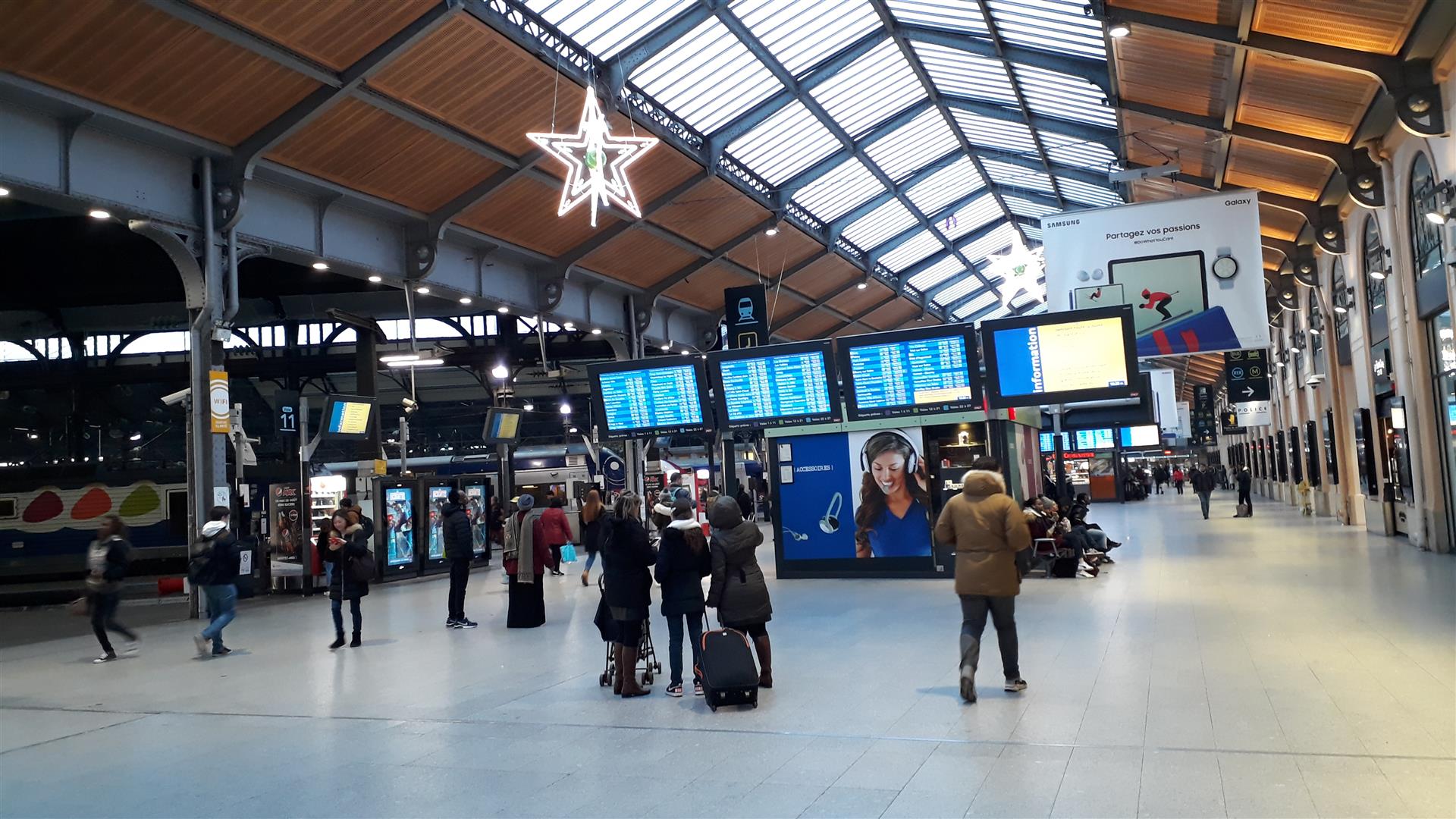
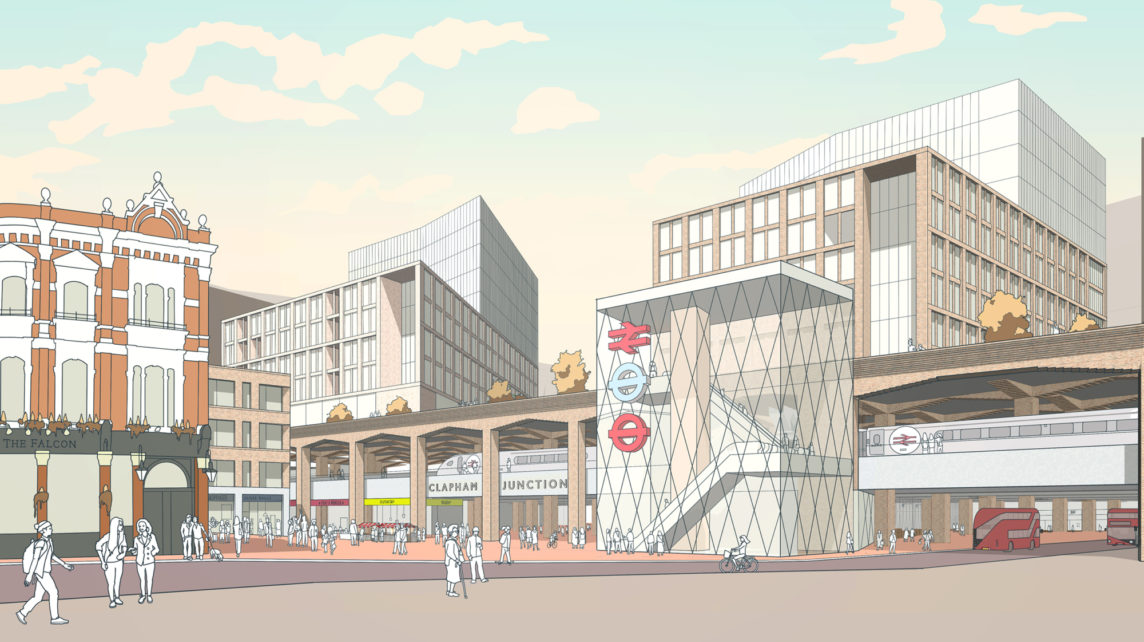



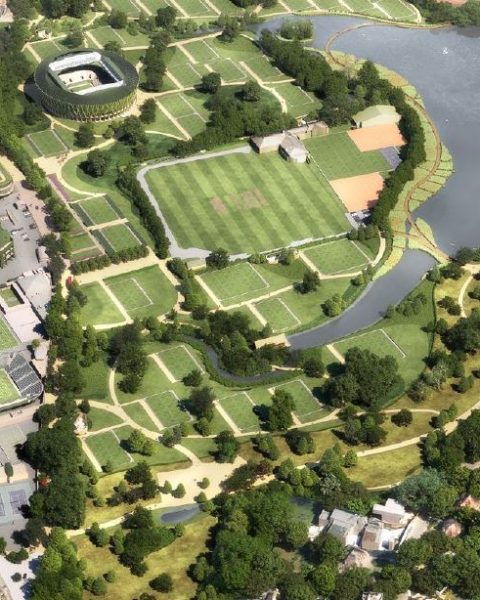
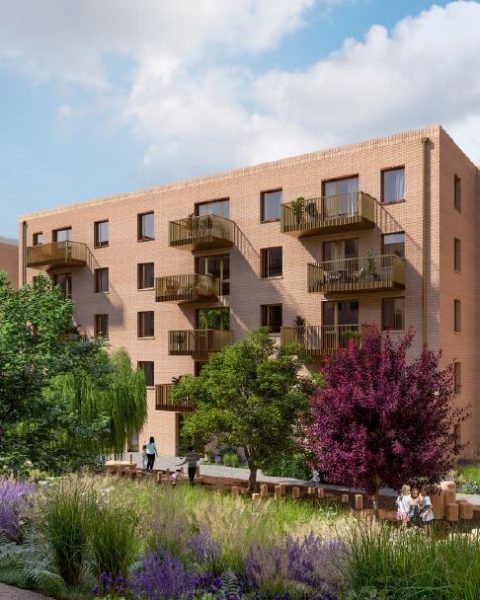
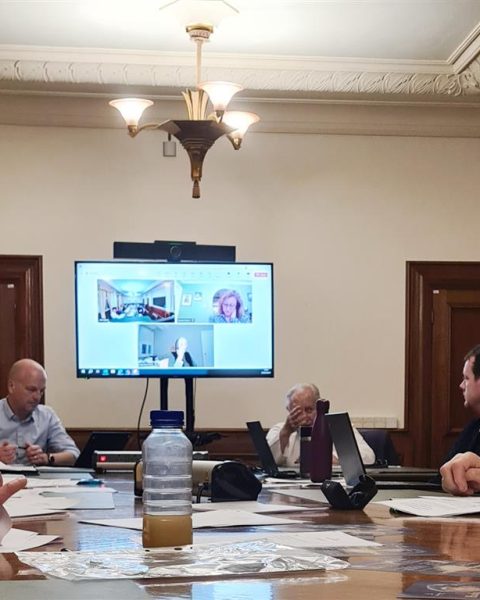
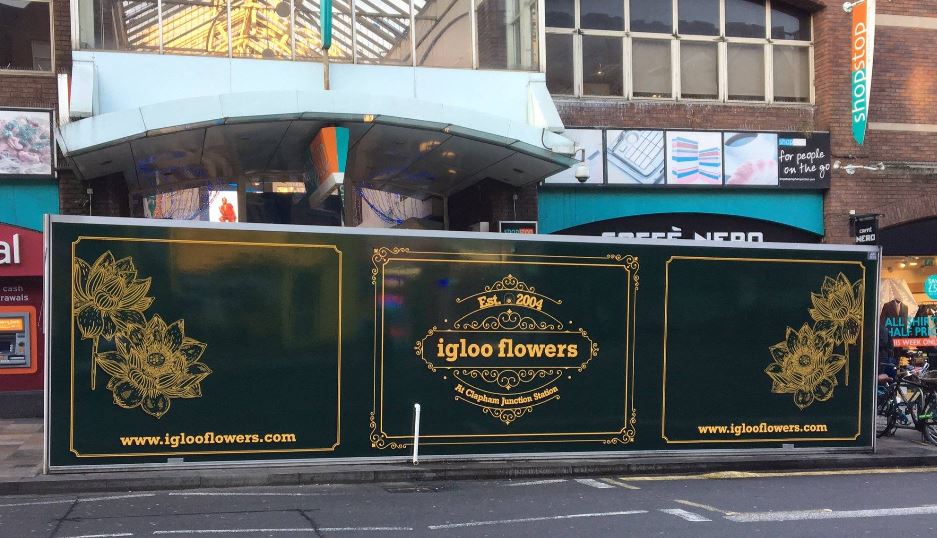




I should like to make two remarks about information displayed at Clapham Junction.
The station clock is always wrong. This is disconcerting.
When John Bowis was the M.P., he said he could never understand why the indicator could not tell passengers which platform to go to for the next train to Victoria or Waterloo. The only way to tell is to go to the footbridge and look out. Before coronavirus stalls were put on the bridge that blocked the view. When they were cleared, I thought ‘Good riddance! Now I can see the trains coming.’
During a normal rush hour there are plenty of trains and unless you are in a tearing hurry it doesn’t much matter which platform you go to. But the times are not normal. Yesterday the choice for Waterloo was between Platform 7 and Platforms 3 & 4 and you had either to gamble or go to the bridge and run.
Where are the wonders of modern technology?
Thank you for all of that good work. I have one request please, please ensure the ticket office remains at the station there are many us who can not manage it all on line I am 83 and one of those.